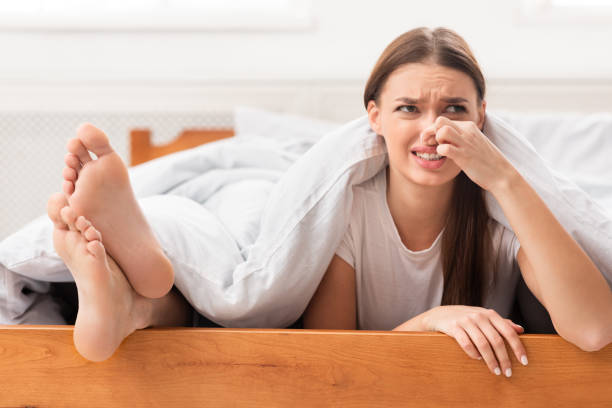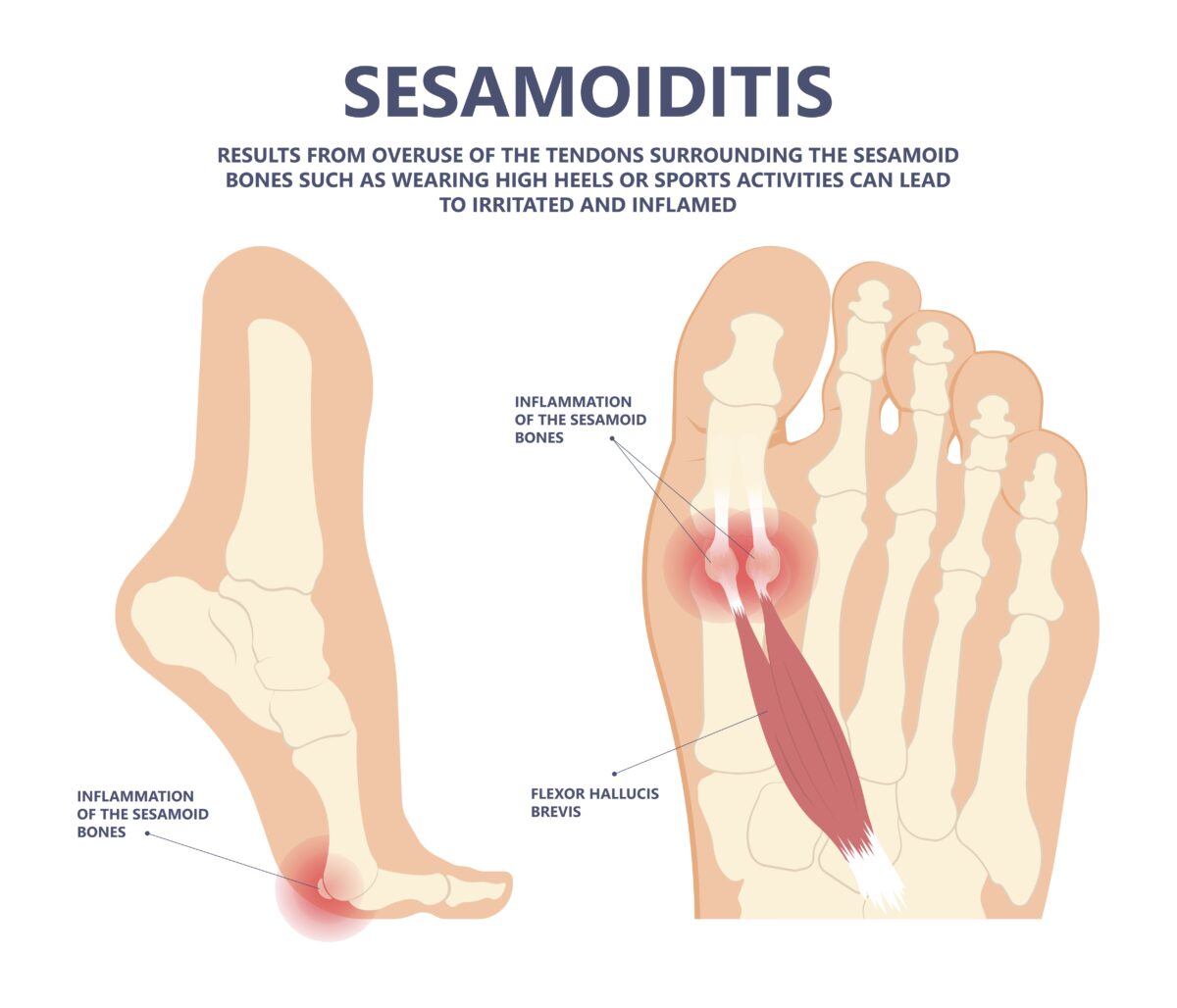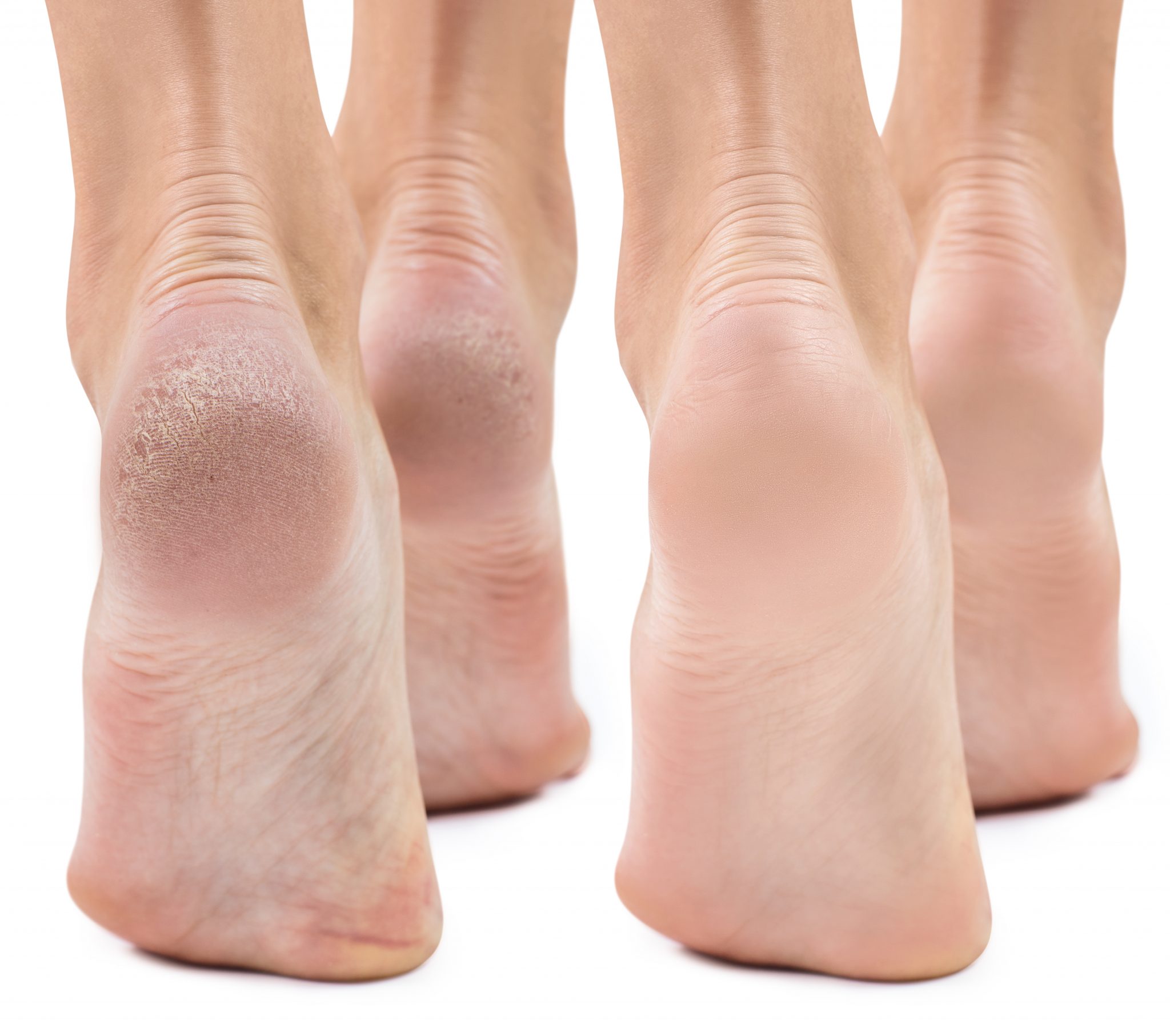An athlete’s foot, a common fungal infection that affects the skin on the feet, can cause discomfort and irritation if left untreated. However, it is possible to alleviate symptoms and prevent recurrence with proper care and management.
In This Guide, You’ll Explore
What’s an Athlete’s Foot?
Athlete’s foot, also known as tinea pedis, is a fungal infection that affects the skin on the feet.
It’s a common condition, typically characterized by itching, burning, and cracked, peeling skin, especially between the toes.
It can also cause redness, inflammation, and sometimes blisters.

Symptoms of Athlete’s Foot:

The symptoms of athlete’s foot can vary depending on the severity of the infection and individual factors, but common signs and symptoms include:
- Itching: Athlete’s foot typically causes intense itching, especially between the toes.
- Burning sensation: The affected skin may feel like it’s burning or stinging.
- Redness and inflammation: The skin affected by an athlete’s foot may appear red, swollen, and irritated.
- Peeling or cracking skin: The skin on the feet, particularly between the toes, may become dry, flaky, and cracked.
- Blistering: In some cases, an athlete’s foot can cause small blisters on the affected skin.
- Thick, discolored toenails: In advanced cases or if the infection spreads to the nails, toenails may become thickened, discolored, and brittle.
- Odor: Athlete’s foot can sometimes cause a foul odor due to the presence of bacteria and fungi on the skin.
An athlete’s foot can spread to other parts of the body, such as the hands or groin, causing similar symptoms in those areas.
It’s important to note that not everyone with an athlete’s foot will experience all of these symptoms, and symptoms can vary from person to person.
Lifestyle and Home Remedies for Managing and Preventing Athlete’s Foot:

- Keep Feet Clean and Dry:
- Wash your feet daily with soap and water, ensuring to dry them thoroughly, especially between the toes.
- Moisture provides an ideal environment for fungi to thrive, so keeping your feet clean and dry can help prevent athlete’s foot.
- Wear Breathable Footwear:
- Opt for shoes made of breathable materials such as leather or mesh, which allow air to circulate your feet and help keep them dry.
- Avoid wearing tight-fitting shoes or synthetic materials that trap moisture.
- Change Socks Regularly:
- Change your socks at least once a day, especially if your feet tend to sweat excessively.
- Choose socks made of moisture-wicking materials such as cotton or wool to help keep your feet dry.
- Use Antifungal Powders or Sprays:
- Apply over-the-counter antifungal powders or sprays to your feet and inside your shoes to help prevent fungal growth.
- These products can help keep your feet dry and create an inhospitable environment for fungi.
- Alternate Shoes:
- Avoid wearing the same pair of shoes every day.
- Rotate between different pairs to allow them to air out and dry completely between wearings.
- Avoid Walking Barefoot in Public Areas:
- Fungi that cause athlete’s foot to thrive in warm, moist environments such as locker rooms, swimming pools, and communal showers.
- Wear shower shoes or sandals when walking in these areas to reduce your risk of infection.
- Keep Nails Trimmed:
- Keep your toenails trimmed short and straight across to prevent fungi from accumulating underneath the nails.
- Avoid cutting the nails too short or rounding the edges, as this can increase the risk of ingrown toenails.
- Avoid Sharing Personal Items:
- Do not share towels, socks, shoes, or other personal items with others, as this can spread fungal infections.
- Maintain Good Foot Hygiene:
- Practice good foot hygiene by regularly inspecting your feet for any signs of infection, such as redness, itching, or peeling skin.
- Promptly treat any signs of athlete’s foot to prevent it from worsening or spreading.
- Consider Soaking Feet in Vinegar:
- Some people find relief from athlete’s foot symptoms by soaking their feet in a mixture of vinegar and water.
- Vinegar has antifungal properties that may help inhibit the growth of fungi on the skin.
- Mix one part vinegar with four parts water and soak your feet for 10-15 minutes daily.
Also See:
Step into Wellness: Discover the Key to Healthy Feet with Daily Care Secrets Unveiled
Addressing Foot Problems: Insoles as Effective Solutions
Custom vs. Over-the-Counter Arch Supports: A Comprehensive Guide to Optimal Foot Health
When It’s Important to Seek an Appointment with a GP:
It’s advisable to schedule an appointment with a GP if:
- Over-the-counter treatments for athlete’s foot fail to provide relief.
- You’re experiencing significant discomfort.
- Your foot or leg exhibits symptoms such as heat, pain, and redness (note that redness might be less apparent on darker skin tones), which could indicate a more severe infection.
- The infection spreads to other areas of your body, such as your hands.
- You have diabetes, as foot issues can pose greater risks in diabetic individuals.
- You have a weakened immune system due to factors such as organ transplantation or undergoing chemotherapy.
Preparation for Your Appointment:
If you suspect you have athlete’s foot and plan to see a healthcare professional for diagnosis and treatment, here are some steps you can take to prepare for your appointment:
- Note Your Symptoms:
- Before your appointment, make a note of your symptoms, including when they started, how severe they are, and any factors that seem to make them better or worse.
- This information can help your healthcare provider make an accurate diagnosis.
- List Medications and Supplements:
- Make a list of any medications, vitamins, or supplements you’re currently taking. This includes both prescription and over-the-counter medications.
- Some medications can affect the treatment or management of an athlete’s foot, so your healthcare provider needs to know what you’re taking.
- Bring Footwear:
- If possible, bring the shoes or footwear you wear most often, especially if you suspect they may be contributing to the problem.
- Your healthcare provider may examine your footwear to assess whether it could be a source of fungal infection.
- Medical History:
- Be prepared to discuss your medical history, including any past or current medical conditions you have, any previous episodes of athlete’s foot or other fungal infections, and any allergies you may have, particularly to medications.
- Questions to Ask:
- Consider preparing a list of questions to ask your healthcare provider during your appointment.
- Some questions you may want to ask include:
- What is the likely cause of my symptoms?
- What tests, if any, do I need to confirm the diagnosis?
- What treatment options are available, and which do you recommend for me?
- How long will it take for my symptoms to improve with treatment?
- Are there any self-care measures I can take to manage my symptoms or prevent recurrence?
- What should I do if my symptoms don’t improve or if they worsen?
- Be Open and Honest:
- During your appointment, be open and honest with your healthcare provider about your symptoms, lifestyle habits, and any concerns you have.
- Providing accurate information can help ensure you receive the most appropriate care.
By taking these steps to prepare for your appointment, you can help facilitate an effective discussion with your healthcare provider and receive the care and treatment you need for an athlete’s foot.
Treatment for Athlete’s Foot from a GP:
When you visit a general practitioner (GP) for athlete’s foot, they may recommend the following treatments:
- Prescription Antifungal Medications:
- If over-the-counter treatments have been ineffective, your GP may prescribe stronger antifungal medications in the form of creams, ointments, or oral medications.
- These medications work to kill the fungus causing the infection.
- Topical Steroids:
- In cases where there is significant inflammation and itching, your GP may prescribe a topical steroid cream to help reduce inflammation and provide relief from symptoms.
- Antibiotics:
- If there is evidence of a secondary bacterial infection, your GP may prescribe antibiotics to treat the bacterial infection alongside antifungal medications.
- Foot Soaks:
- In some cases, your GP may recommend soaking your feet in a solution of potassium permanganate or other antifungal agents to help alleviate symptoms and aid in the healing process.
- Lifestyle and Hygiene Recommendations:
- Your GP may guide proper foot hygiene practices, such as keeping your feet clean and dry, wearing breathable footwear, and avoiding walking barefoot in public areas.
- They may also advise on measures to prevent recurrence of the infection.
- Monitoring:
- Your GP may schedule follow-up appointments to monitor your progress and adjust treatment if necessary.
- They will also ensure that any underlying conditions, such as diabetes or a weakened immune system, are appropriately managed to reduce the risk of complications.
It’s essential to follow your GP’s instructions carefully and complete the full course of treatment, even if symptoms improve before the medication is finished.
If you have any concerns or experience side effects from the prescribed medications, be sure to communicate with your GP promptly.
Choosing Proper Insoles for an Athlete’s Foot:
When choosing insoles for an athlete’s foot, it’s important to consider options that provide comfort, support, and breathability while minimizing moisture buildup.
Here are some features to look for in insoles:
Antimicrobial Properties:
- Look for insoles treated with antimicrobial agents to help prevent the growth of fungi and bacteria that can exacerbate an athlete’s foot.
Moisture-Wicking Materials:
- Opt for insoles made from moisture-wicking materials such as bamboo charcoal, moisture-wicking fabric blends, or perforated foam.
- These materials help to keep your feet dry by wicking moisture away from the skin.
Breathability:
- Choose insoles with perforations or ventilation channels to allow air circulation inside your shoes, reducing sweat and moisture buildup.
Cushioning and Support:
- Select insoles with adequate cushioning and arch support to provide comfort and reduce pressure on the feet.
- Look for options with gel inserts or memory foam for added cushioning.
Odor Control:
- Some insoles come with odor-control technology or activated charcoal to help absorb and neutralize unpleasant odors associated with sweaty feet.
Removable and Washable:
- Consider insoles that are removable and washable, making it easier to keep them clean and maintain proper foot hygiene.
Correct Fit:
- Ensure that the insoles fit properly inside your shoes without crowding or causing discomfort.
- Trim them if necessary to achieve the perfect fit.
Compatibility:
- Choose insoles that are compatible with the type of shoes you typically wear, whether it’s athletic shoes, casual shoes, or work boots.
It’s also important to replace your insoles regularly, as they can become worn out and less effective over time. By selecting insoles with these features, you can help manage athlete’s foot symptoms and promote foot health and comfort.
Conclusion:
Effective care for an athlete’s foot involves a combination of lifestyle adjustments, home remedies, and, when necessary, medical interventions. By practicing good foot hygiene, wearing appropriate footwear, and seeking timely treatment from healthcare professionals, you can manage an athlete’s foot effectively and minimize its impact on your daily life.
Prevention is key, so stay vigilant, and take proactive steps to keep your feet healthy and fungus-free.










Thanks for sharing. I read many of your blog posts, cool, your blog is very good.